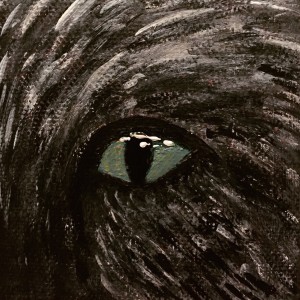Fourth Sunday of Easter | John 10:22-42
Would You Want to See?
Religious folk are seldom happy and almost never satisfied. You might argue the point, but in the gospels the religious folk are the only ones who cannot see what Jesus is doing.
The blind see. The lame get up and walk away. Even dead people get up and walk away. Everyone sees it happening, everyone that is except the religious folk. You’d think they would be on the lookout for such signs and wonders, but no. Even when they notice a miracle, they complain that it was done on the wrong day, the Sabbath, or that Jesus had no clear license to perform such miracles—who gave him permission?

Seeing is not believing, not for the religious folk, not for the religious leaders, not in any of the gospels, not in the Gospel of John. In the gospel accounts, religious people look at the world through the lenses of their belief system, and the shades they wear block out more than sunlight. They’re not just wearing spiritual Ray-Bans. These people are peering at the world through welding helmets.
The faithful, well, they are a different story. Plenty of them see the signs, read them just fine, and come to the conclusion that Jesus comes from God. It is plain to them. This odd bunch of fisherman and tax collectors and prostitutes, teachers and workmen and shepherds, they get it. Maybe they have the advantage of not being blinded by belief, and so they are better able to see with eyes of faith.
We’re not that different from the people in John’s Gospel. Instead of believing what we see, we see what we believe.
 We look at cars and clothes, and we believe certain brands are better. Sometimes we are right. Often, we go on buying the more expensive brand just because we believe it is better, not because we see any difference. It may even be that we trick ourselves into seeing a difference because we believe there is one.
We look at cars and clothes, and we believe certain brands are better. Sometimes we are right. Often, we go on buying the more expensive brand just because we believe it is better, not because we see any difference. It may even be that we trick ourselves into seeing a difference because we believe there is one.
We look at people, and most of us see what we think they are. It happens all the time. It is true of the rich and famous and powerful, but it is more true of the weak, the failed, the different. The more radically different people might be, the more likely we are to see only what we already think about them. That’s how minorities—by color or creed or any other measure—are treated as lesser people. That’s how the homeless become a ‘problem’ instead of people.
Maybe that is why so many marginal people were drawn to Jesus. He saw them—them, not some idea about them, and they knew the difference. Maybe that is why so many people who are different become marginalized. We look at them and see what we think they are—not them, but some idea about them, and they know the difference.
Belief is an intellectual thing, a choice, a trick of the mind. Faith? “Faith is the assurance of things hoped for, the conviction of things not seen.”¹ Faith requires thought, of course, but it is made of something else, something more. Belief speaks of what we think, but faith speaks of who we are.
There are things our bones and our hearts know long before our minds assent.
__________
¹ Hebrews 1:1, a famous verse, and much better to focus upon than the “an eye for an eye” that some people favor.


